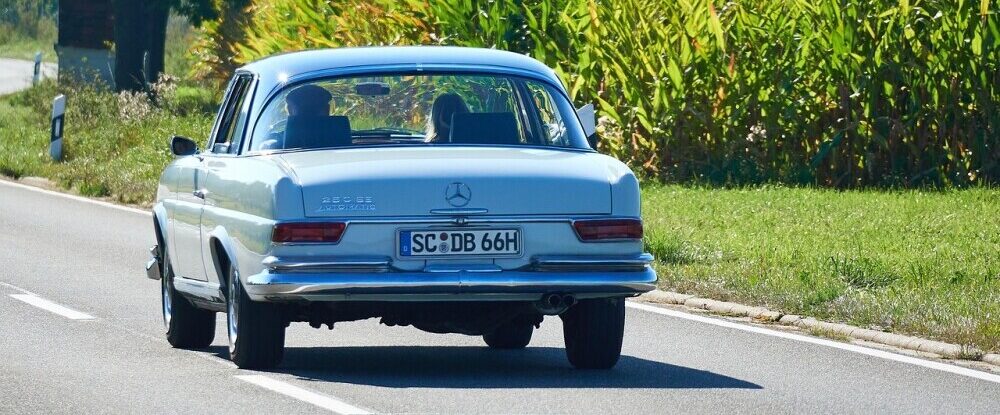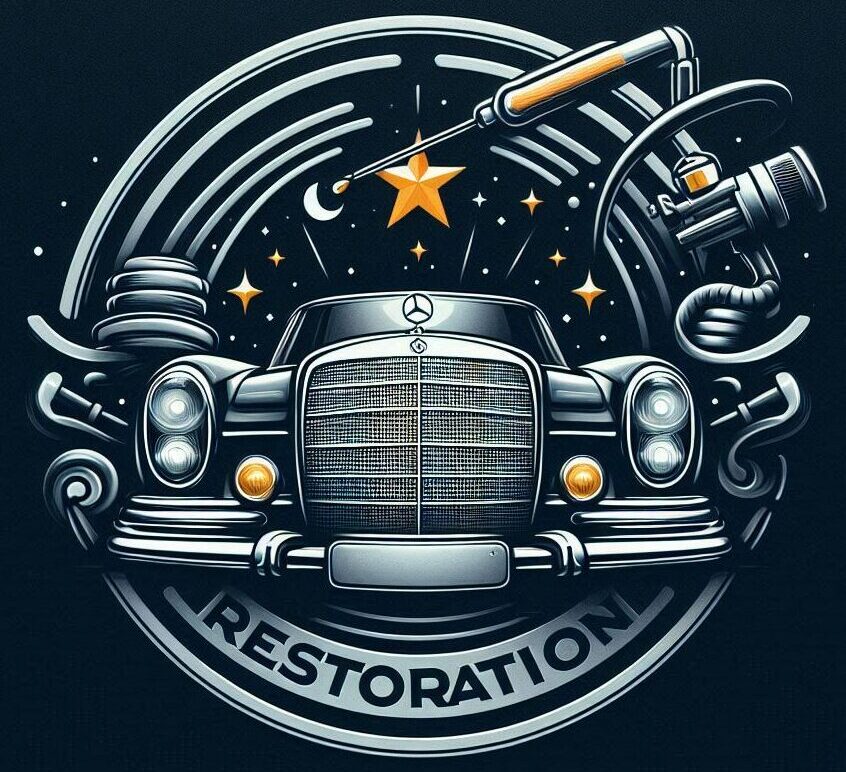
When it comes to restoring a classic car, it’s easy to get caught up in the excitement. But before diving in, it’s essential to understand the balance between a car’s value and the costs involved in bringing it back to life. Classic cars can hold significant sentimental and financial value, but the cost of restoration often surprises many first-time restorers. This guide will help you evaluate if your restoration project makes financial sense, or if you’re better off saving those restoration dollars.
Car restoration, a process that breathes new life into old, rusted beauties or vintage classics, can be quite a journey. It involves repairing or replacing worn-out parts, often aiming to bring a car back to its original glory or even beyond, sometimes with modern enhancements. Now, the question that lingers for many is simple yet significant: Is restoring this car worth it?
Several factors come into play when making this decision. Nostalgia is a powerful motivator. Perhaps that car sitting in your garage was your first ride or a beloved family heirloom. Emotional value can overshadow financial considerations, but it’s crucial to weigh both aspects. The potential market value post-restoration and your personal attachment often guide whether it’s a passion project or a smart investment.
To truly assess whether it’s worth it, consider the car’s rarity and demand. Are there many similar models out there? Rarer finds often justify the restoration costs with higher returns. Besides, the car’s current condition hugely impacts the decision – a car that’s mechanically sound will obviously cost less to restore than one that’s not.
Restoration isn’t just about dumping money into old metal; it’s about finding that sweet spot between emotion and practicality. Be honest about your skills if you’re taking on the project yourself. And even if you’re hiring experts, understand the journey you’re about to embark on. Make sure you know the anticipated expenses and whether the final value aligns with your goals.
Let’s explore step-by-step how to weigh a car’s potential value against the costs of restoration to make an informed choice.
Step 1: Determine Your Goals
Why It Matters: Knowing your personal goals for the car will set the tone for how much you’re willing to invest. Are you restoring it for the love of the car, or do you hope to sell it for a profit?
What to Do: Start by deciding if you want to keep the car for personal enjoyment or if this is a project to increase the car’s resale value. If it’s a passion project, you might be willing to spend more than the car’s market value. However, if you plan to sell, you’ll want to consider whether the restoration costs make financial sense.
Resources:
- Restoration Inspiration: Browse articles on Hemmings for stories on why others have restored classic cars, which might help clarify your goals.
Step 2: Assess the Car’s Current Market Value
Why It Matters: Knowing the car’s current value will help you decide if restoration is worth the investment. Some models hold their value better than others, especially well-known classics.
What to Do: Research the car’s market value in its current condition. You can get a rough estimate from car valuation tools and classic car auction sites. Factors that affect value include the car’s make and model, rarity, age, and current condition. Collect this data as a baseline before considering restoration costs.
Resources:
- Online Valuation Tools: There are Tools for classic car values.
- Auction Sites: Sites like Bring a Trailer list prices of cars in various conditions, which can provide realistic market comparisons.
Step 3: Estimate Restoration Costs
Why It Matters: Restoration can be expensive, so having a clear picture of the costs involved helps you make an informed decision.
What to Do: Gather estimates for each aspect of the restoration, including bodywork, engine repair, interior, and any custom work. Get quotes from local restoration shops or ask in classic car communities. Also, factor in the cost of rare or hard-to-find parts, as these can quickly add up. Remember to account for unexpected costs, too – vintage restorations almost always come with surprises.
Resources:
- Cost Breakdown Guides: Classic Car Restoration Club has helpful articles on estimating costs for each part of the restoration process.
- Forums and Communities: Join forums like BenzWorld or ClassicCar.com to ask others for rough cost estimates on similar projects.
Step 4: Compare Potential Value After Restoration
Why It Matters: Once restored, your car may increase in value – but by how much? Knowing this potential value will help you understand if the restoration is a smart financial move.
What to Do: Look up comparable models that have been fully restored to get an idea of their resale value. Factor in the car’s rarity and historical appeal, as these can boost its value. Keep in mind that while some classics may significantly appreciate in value post-restoration, others might not.
Resources:
- Resale Values: Hemmings Auction Results offers insights into recent classic car sales prices.
- Classic Car Value Insights: RM Sotheby’s provides data and articles on how different cars perform at auction.
Step 5: Calculate Your Break-Even Point
Why It Matters: This is the point at which your car’s value equals your total investment, including restoration costs. Calculating this helps you understand how likely you are to recoup your investment.
What to Do: Add up your restoration costs and compare them to your car’s potential post-restoration value. If the car’s post-restoration value doesn’t cover your investment (or leaves you with a small margin), you may want to reconsider. However, if you’re restoring the car for personal enjoyment, the break-even point might not matter as much.
Resources:
- Break-Even Calculators: General tools like Investopedia’s ROI Calculator can help estimate your financial break-even point.
- Classic Car Guides: Auto Restorer Magazine often publishes insights into the financial side of restoration.
Step 6: Factor in Emotional Value
Why It Matters: Classic car restoration isn’t always about making a profit. Many people restore cars for sentimental reasons or the joy of the process, which has its own value.
What to Do: Think about what the car means to you personally. Was it a family car or a model you’ve always dreamed of owning? If so, the experience of restoring it and enjoying it on the road may be worth more than its resale value.
Resources:
- Classic Car Stories: ClassicCars.com Journal features stories from restorers who prioritize passion over profit.
Step 7: Decide on DIY vs. Professional Restoration
Why It Matters: Doing some of the work yourself can save money, but it’s not always easy or feasible, depending on your skills, tools, and time.
What to Do: Decide if you’re up for tackling parts of the restoration yourself, like detailing or minor repairs, or if you’ll need professional help for most of it. DIY can lower costs but might take longer, while professional restorations are faster but more expensive. Also, consider hiring a professional for critical jobs like bodywork or engine repair, where experience makes a big difference.
Resources:
- DIY Tips: DIY Auto School on YouTube provides restoration tips for beginners.
- Professional Shop Locator: Use Mercedes-Benz Classic Center for locating professional restoration shops that specialize in Mercedes models.

Step 8: Decide If the Restoration Fits Your Budget and Timeline
Why It Matters: Restoration projects are rewarding but can become costly and time-consuming, especially if you’re restoring an older or rare model.
What to Do: Take a look at your budget and timeline to decide if the restoration is financially manageable. If the project could strain your budget or take years to complete, consider starting with smaller repairs to keep costs and time manageable. This approach allows you to enjoy the car sooner, even if it’s a work-in-progress.
Resources:
- Budget Planning Tools: Mint and YNAB are helpful for tracking spending on large projects.
- Restoration Timelines: Check out Restoration Research for typical timelines based on project scope.
Step 9: Consider Long-Term Maintenance Costs
Why It Matters: Even after restoration, classic cars require ongoing maintenance, which can be more expensive than with modern cars.
What to Do: Factor in the cost of regular maintenance, such as oil changes, brake checks, and potential part replacements. Vintage cars often need special care, so plan for these long-term costs when considering if the restoration is worth it financially.
Resources:
- Maintenance Guides: Classic Mercedes Club has maintenance tips specific to classic Mercedes.
- Car Care Tools: Sites like Amazon Automotive offer affordable tools and supplies for DIY maintenance.
Step 10: Make a Decision Based on Financial and Personal Value
Why It Matters: Weighing the financial and personal value of a restoration project can help you make a choice that feels right, whether you’re in it for profit or personal fulfillment.
What to Do: After gathering all the facts, decide if the restoration is financially sound or if it holds enough personal value to be worthwhile. If restoring the car brings you joy, go for it! But if you’re looking to make money, be sure the numbers add up before you commit.
Resources:
- Financial Guides: SEMA’s Market Insights offers helpful data on trends in the classic car market, which might help with your final decision.
Wrapping Up Understanding Car Value Vs. Restoration Costs
Deciding whether to restore a classic car is as much an emotional choice as it is a financial one. By carefully evaluating the costs, potential value, and sentimental worth, you can make a decision that feels right for you and your car. Whether you’re in it for the love of the ride or hoping to boost the car’s value, understanding car value vs. restoration costs will set you on the road to a successful project.

This article does a great job explaining how to balance a car’s value with restoration costs. I found the advice on assessing current market value and factoring in emotional attachment especially useful. The step-by-step breakdown helps make an informed decision. I’m curious, have you noticed any particular classic car models where restoration consistently adds significant value? Thanks for your insights 🙂
Thank you so much for your comment! Great question about classic car models—there are certain models where restoration can really pay off! Classic Mustangs, Chevrolet Camaros, and Porsche 911s are just a few examples where a well-done restoration can significantly boost value. Limited-edition models also tend to see a significant return on investment.